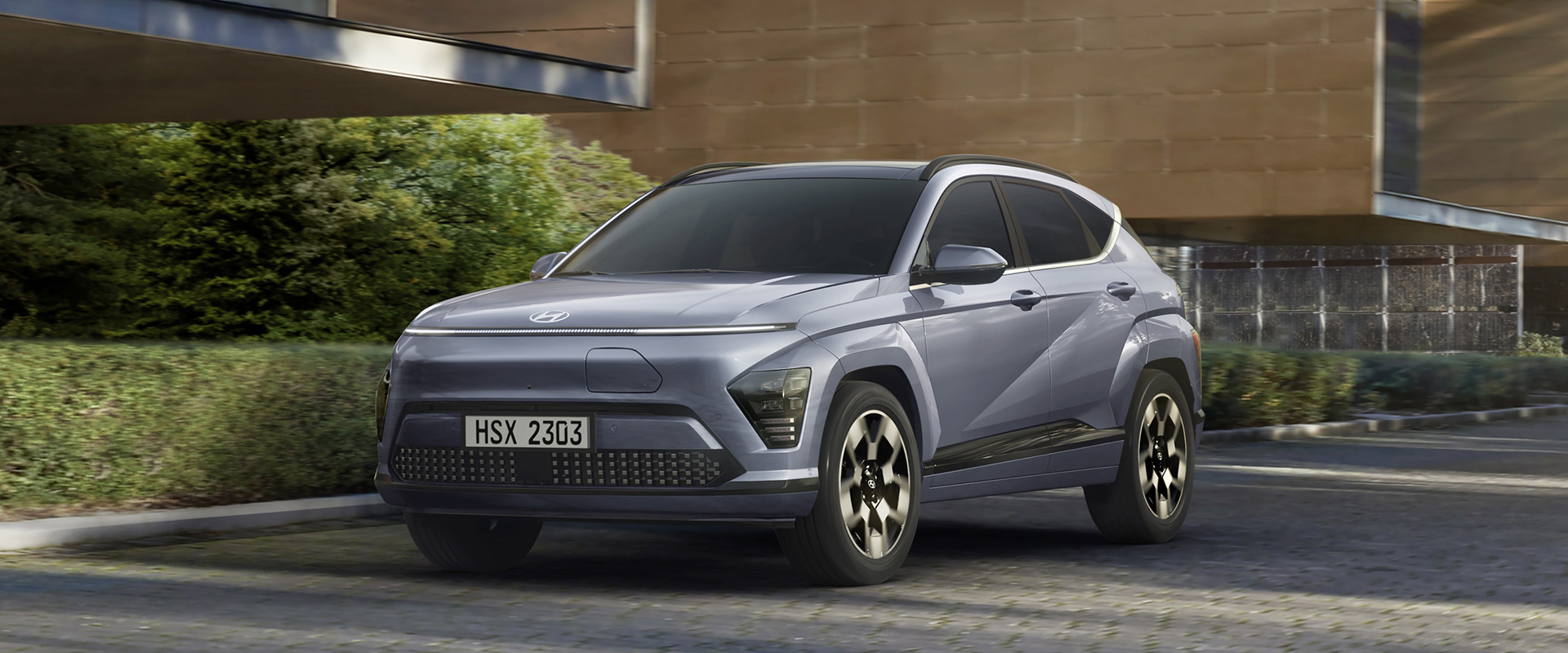2024 Hyundai Kona: Bigger, Smarter, Electrified
March 8, 2023The Hyundai Kona subcompact utility is entering a new era in 2024, boasting more interior volume, smarter technology and headlined by an electrified powertrain.
In fact, the second generation Kona was designed as an EV first, though gasoline variants will still be offered. Each model will flex a new body, of which the EV design roots are self-evident.
This latest model has grown in some meaningful ways– about 6.9-inches longer and riding on a wheelbase now about 2.4-inches longer, bringing their totals to 171.5-inches and 105-inches respectively; though, the N Line model measures out about an inch longer overall on an unchanged wheelbase. It’s also wider, about an inch more for a total of 72-inches overall; and it’s taller by three-quarters of an inch, stacking up to about 62-inches total.
That’s a lot of numbers to throw at you, but it should provide numerical evidence to the aforementioned statement, now reiterated: The new Kona is bigger. And with that comes more room to stretch out inside, especially in the rear seats where legroom is up to about 36.5-inches overall. The cabin is also where the next part of the titular equation comes into play, as the second-gen Kona is indeed smarter thanks to additional tech.
Specifically, the driver benefits from a panoramic display comprising two 12.3-inch displays, and Over-the-Air (OTA) software updates mean it’s kept current. Hyundai’s Digital Key 2 Touch, which uses near-field communication (NFC), allows owners to unlock their Kona with their smartphone or smartwatch. More safety features, like a Driver Status Monitor, are also equipped, as is “i-PEDAL” one-pedal driving. Tying tech with enhanced volume, the shift-by-wire gear selector has been relocated to behind the steering wheel, opening up more storage in the center console region.
The 2024 Kona Electric is packaged with either a standard range 48.4kWh battery pack or a long range 65.4kWh variant, the latter WLTP-estimated at approximately 305 miles of range. A 10-80 percent charge can be done in 41 minutes at a proper fast charger. And if you need to offload some of that juice to your favorite appliances– say, an electric juicer– Hyundai’s Vehicle-to-Load (V2L) function allows you to power any device or charge up your equipment with either the interior’s standard outlet or the exterior EV port with an adaptor.
Not much information was given regarding the EV’s internal combustion sibling, but we’re sure more details will emerge as we get closer to the second gen’s launch. We do know that the Kona N Line, a sportier trim, will make an appearance on both the EV and ICE models; though it’s unclear whether the performance-geared Kona N will make a return.







